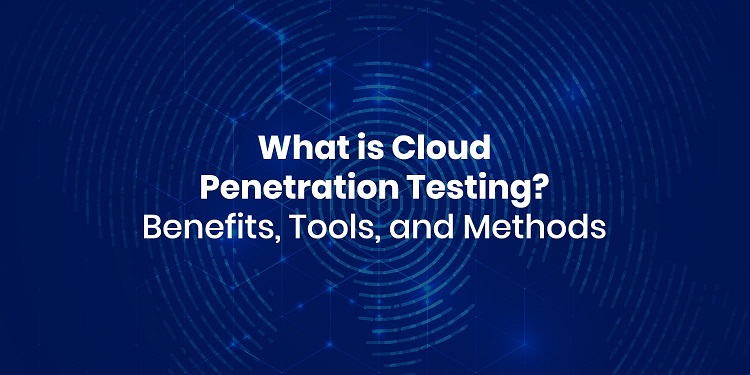While many people see cloud computing as more secure than an on-premises IT environment, the truth is that it’s far from impenetrable. According to Check Point’s 2022 Cloud Security Report, 27 percent of organizations say they suffered from a security incident in their public cloud infrastructure within the past year.
Techniques such as cloud penetration testing can help strengthen your cloud security posture. So, what is cloud penetration testing, and how can you get started using it?
This blog covers cloud penetration testing, including the various benefits, tools, and methods of cloud pentesting.
What is Cloud Pen Testing?
Cloud penetration testing is a simulated attack to assess the security of an organization’s cloud-based applications and infrastructure. It is an effective way to proactively identify potential vulnerabilities, risks, and flaws and provide an actionable remediation plan to plug loopholes before hackers exploit them. Cloud penetrating testing helps an organization’s security team understand the vulnerabilities and misconfigurations and respond appropriately to bolster their security posture.
With the escalating crisis of cloud cyberattacks jeopardizing businesses, cloud security should be a primary agenda to help organizations avoid costly breaches and achieve compliance. By conducting cloud penetration testing, they can address potent cloud security issues and resolve them immediately before they turn to a malicious hacker’s advantage.
What Are the Cloud Penetration Testing Methods?
Penetration testing is a widespread cybersecurity practice that involves simulating a cyberattack on an IT resource or environment. Ethical hackers (also called “white-hat hackers”) work with organizations to identify vulnerabilities in their IT security postures. The organization can fix these issues proactively before a malicious actor can discover and exploit them.
Cloud penetration testing, that involves the methods of penetration testing as applied to cloud computing environments. Formally, cloud penetration testing is the process of identifying, assessing, and resolving vulnerabilities in cloud infrastructure, applications, and systems. Cloud pentesting experts use various tools and techniques to probe a cloud environment for flaws and then patch them.
Penetration testing and cloud penetration testing are typically separated into three types of methods
◉ In white box testing, penetration testers have administrator or root-level access to the entire cloud environment. This gives pentesters full knowledge of the systems they are attempting to breach before the tests begin and can be the most thorough pentesting method.
◉ In gray box testing, penetration testers have some limited knowledge of or access to the cloud environment. This may include details about user accounts, the layout of the IT system, or other information.
◉ In black box testing, penetration testers have no knowledge of or access to the cloud environment before the tests begin. This is the most “realistic” cloud penetration testing method in that it best simulates the mindset of an external attacker.
Benefits of Cloud Penetration Testing
Cloud penetration testing is an essential security practice for businesses using the public cloud. Below are just a few advantages of cloud pentesting:
◉ Protecting confidential data: Cloud penetration testing helps patch holes in your cloud environment, keeping your sensitive information securely under lock and key. This reduces the risk of a massive data breach that can devastate your business and its customers, with reputational and legal repercussions.
◉ Lowering business expenses: Engaging in regular cloud penetration testing decreases the chance of a security incident, which will save your business the cost of recovering from the attack. Much of the cloud penetration testing process can also be automated, saving time and money for human testers to focus on higher-level activities.
◉ Achieving security compliance: Many data privacy and security laws require organizations to adhere to strict controls or regulations. Cloud penetration testing can provide reassurance that your business is taking adequate measures to improve and maintain the security of your IT systems and cloud environment.
Common Cloud Pentesting Tools
There’s no shortage of cloud pentesting tools for IT security professionals. While some agencies are intended for use with a specific cloud provider (e.g., Amazon Web Services or Microsoft Azure), others are “cloud-agnostic,” meaning they’re fit for use with any provider. Some of the most popular cloud penetration testing tools include:
◉ Nmap: Nmap is a free and open-source network scanning tool widely used by penetration testers. Using Nmap, cloud pentesters can create a map of the cloud environment and look for open ports and other vulnerabilities.
◉ Metasploit: Metasploit calls itself “the world’s most used penetration testing framework.” Created by the security company Rapid7, the Metasploit Framework helps pentesters develop, test, and launch exploits against remote target machines.
◉ Burp Suite: Burp Suite is a collection of security testing software for web applications, including cloud-based applications. Burp Suite is capable of performing functions such as penetration testing, scanning, and vulnerability analysis.
Many third-party tools are created for cloud pentesting in the Amazon Web Services cloud. For example, the Amazon Inspector tool automatically scans running AWS workloads for potential software vulnerabilities. Once these issues are detected, the device also determines the severity of the vulnerability and suggests methods of resolving it. Other options for AWS cloud pentesting include Pacu, an automated tool for offensive security testing, and AWS_pwn, a collection of testing scripts for evaluating the security of various AWS services.
Best Practices for Cloud Pen Tests
Cloud penetration testing is both an art and a science, with many tips and advice for security professionals to follow. If you’re looking to get started with cloud pentesting, be sure to follow best practices such as:
◉ Map your cloud environment: Cloud penetration testing can only be effective when you know exactly what assets are under your command—which is incredibly challenging with a multi-cloud or hybrid cloud setup. Start by creating a map of your cloud architecture to help you plan which components to test and how to try them.
◉ Understand the cloud shared responsibility model: Cloud providers and their customers should understand their security obligations, a concept known as the shared responsibility model. Before you start cloud pentesting, make sure you know which security vulnerabilities your responsibility are to fix and which are the cloud providers.
◉ Define the requirements and roadmap: After finding the right cloud penetration testing team or provider, codify your goals and expectations. This should include a timeline for the testing process, a list of deliverables after the tests, and suggestions for how to correct the vulnerabilities discovered.
◉ Establish plans for a worst-case scenario: The cloud pentesting process might uncover a live vulnerability that attackers are already exploiting. In this worst-case scenario, take the time to establish how you would react and respond to fix the issue and mitigate the damage.
Source: eccouncil.org
















